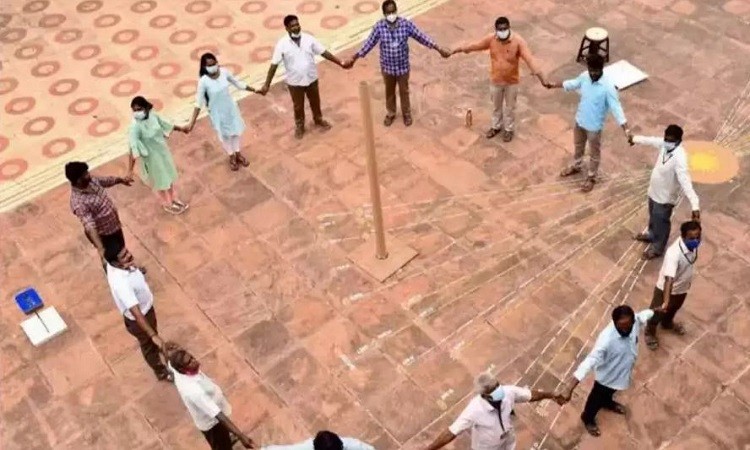
BANGALORE: Get ready for a unique celestial spectacle in Bangalore as the city prepares to experience the mesmerizing Zero Shadow Day on August 18. This extraordinary event, previously observed on April 25 in Bangalore, occurs primarily in areas positioned between the Tropic of Cancer and the Tropic of Capricorn.
What exactly is Zero Shadow Day?
Zero Shadow Day is an exceptional celestial phenomenon that happens twice each year within regions spanning from +23.5 to -23.5 degrees latitude. During this phenomenon, the sun attains its highest point in the sky, causing objects and people to cast no shadows.
To put it simply, declination, as defined by Britannica, is the angular measurement of how far a celestial body is positioned north or south of the celestial equator. On the other hand, as explained by National Geographic, latitude refers to the distance measurement from the Equator towards the north or south. This measurement is established by imaginary lines, known as parallels, which encircle the Earth in an east-west direction, running parallel to the Equator.
What unfolds on a Zero Shadow Day?: On a Zero Shadow Day, the sun aligns directly overhead, resulting in the absence of shadows on the Earth's surface. This occurrence causes the sun to reach its zenith in the sky, leading to a significant reduction in the length of shadows, rendering them virtually non-existent.
What should you anticipate on this occasion?: As per the Astronomical Society of India (ASI), when the sun occupies the zenith position, it casts no shadow on any object. For people residing within the latitude range of +23.5 to -23.5 degrees, the sun's declination corresponds with their latitude twice a year—once during Uttarayan (Northern Solstice) and once during Dakshinayan (Southern Solstice). On these specific days, precisely at noon, the sun appears directly overhead, causing objects on the ground to be devoid of shadows.
Ashwini Vaishnaw Inaugurates India's First 3D-Printed Post Office